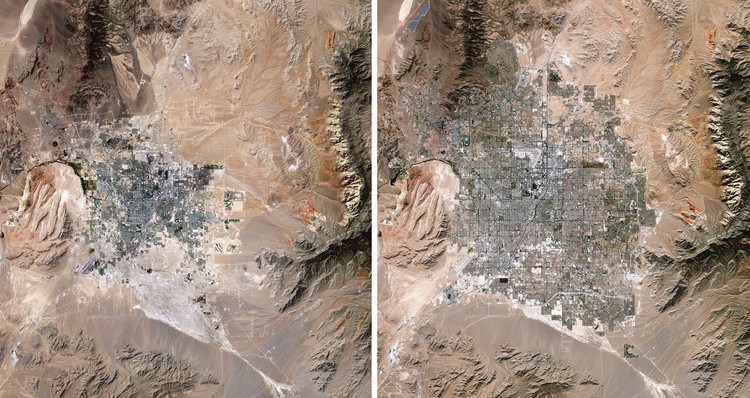
Human impacts on Earth are a common issue nowadays, and many people say that there is no turning back. Climate crisis, greenhouse gases, exploitation of natural resources, production of solid waste and atmospheric pollution are some of the most pressing issues that the global community must address if we want to ensure a sound future for the next generations.
These topics can be viewed in full-color and high-definition in the new book Overview Timelapse: How We Change the Earth, by Benjamin Grant and Timothy Dougherty, which compiles 250 satellite and drone photographs of places on Earth that are in constant transformation.
The book explores human activity on the planet from three central perspectives: Civilization, Utilization, and Reaction. A unique selection of images illustrates the changes caused by sprawling cities, intense consumption, huge infrastructures developed for transporting goods and people, and nature's reactions to the excessive use of its resources. We are offered a collection of powerful imagery that shows an alarming present and a possibly terrifying future.

Civilization shows the results of urbanization, transportation, and overconsumption of the land. This subject is especially relevant to architects, who can see the work of fellow professionals from all over the world over many generations permanently imprinted on Earth grounds. Aerial photography provides a rare, privileged perspective that allows us to reflect on how we plan our cities and the massive amount of resources needed to maintain this way of designing.
Beijing Daxing International Airport (PKX) 2012–2020. Source imagery © Maxar Technologies
The chapter Utilization addresses these natural resources and their uncontrolled consumption. As we go through the images that show, in great detail, activities such as mining, agriculture, and energy development, one cannot help but realize that the human presence on Earth is absolutely unbounded and we must work towards more sustainable solutions - and apply those that already exist but still encounter resistance.

As long as our existence on the planet depends on the endless exploitation of these resources, nature will continue to react - more intensely and more frequently. Reaction brings together photographs of desertification, permafrost melting, tidal movement, forest fires and other environmental disasters all of which paint a disheartening picture of the planet.


The most striking thing about these images, however, is the time stamp of our actions on the planet's surface. Like a palimpsest, we remove existing elements to give way to new forms of human activity that become embedded in our land, and these temporal processes are also documented in the book through impressive sequential images that can capture time and show us, in the blink of an eye, transformations that have taken weeks, months, or even years.
Las Vegas Residential Development 2014–2019. Source imagery © Nearmap

To see what one does not want to see, to understand how the choices we make on a human scale are affecting the planet on a global scale, is a major step towards a better future. "What I’m ultimately trying to achieve is for my audience to have an experience of awe," Benjamin Grant tells us. Indeed, this feeling of awe, inspired by the sublime, hints to something grotesque —perhaps the proper term to describe the impacts of humans on Earth— but it also inspires feelings of elevation and power —just what is needed to start making a change.

Overview Timelapse: How We Change the Earth is available on Overview's website.
This article is part of the ArchDaily Topic: Human Scale. Every month we explore a topic in-depth through articles, interviews, news, and projects. Learn more about our monthly topics here. As always, at ArchDaily we welcome the contributions of our readers; if you want to submit an article or project, contact us.

























